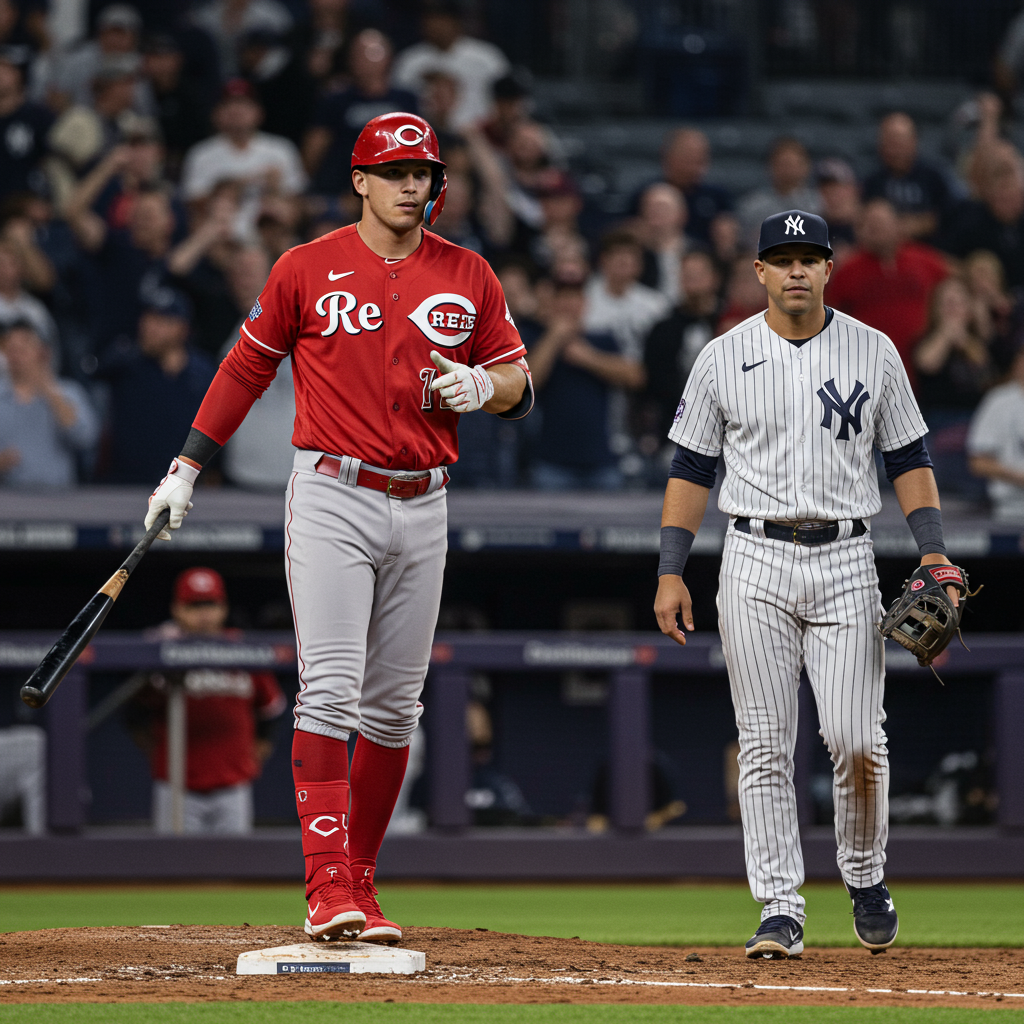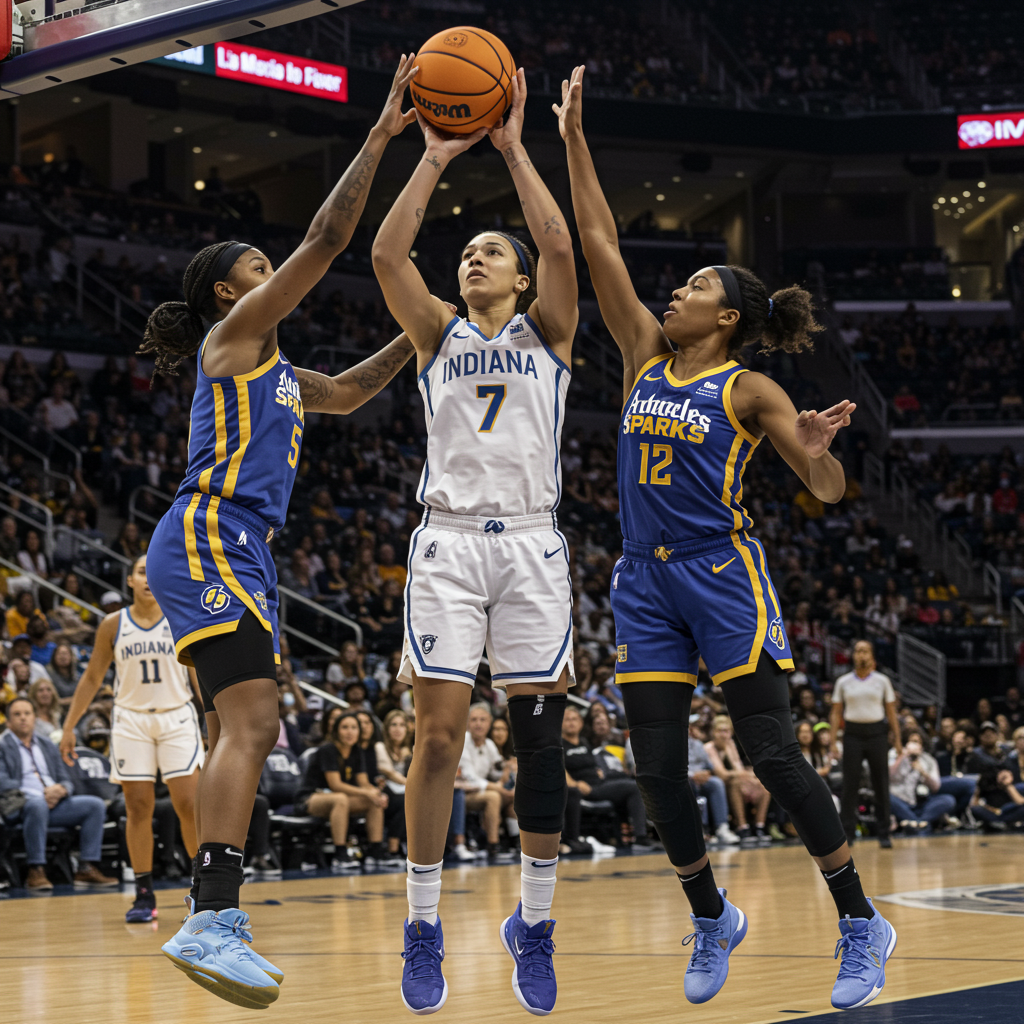The NHL offseason is heating up, and while the unrestricted free agent (UFA) market often grabs headlines, the status of restricted free agents (RFAs) is equally crucial. These talented young players, still under team control but eligible for new contracts, represent significant assets – and potential targets for rival clubs. With the free agency signing period kicking off on July 1, the focus intensifies on which RFAs will sign extensions, accept qualifying offers, or perhaps even draw a rare, but increasingly relevant, offer sheet.
Fueled by a rising salary cap projected to hit $95.5 million, teams have more financial flexibility than ever before. This newfound spending power, combined with a potentially weaker UFA class, makes RFAs particularly appealing acquisition targets. The recent success of the St. Louis Blues in signing restricted free agents Philip Broberg and Dylan Holloway via offer sheets last offseason has arguably shifted the landscape, demonstrating that offer sheets, while historically uncommon, can be a viable strategy for teams with cap space and draft picks.
An offer sheet is a contract proposal made by one team to a restricted free agent of another team. If the RFA signs the offer, their original team has seven days to match the terms. If they choose not to match, they receive draft pick compensation based on the average annual value (AAV) of the signed offer. The compensation tiers are set annually and require the offering team to use their own draft picks. This mechanism adds a fascinating layer of strategic maneuvering to the RFA negotiation period.
Here’s a look at some of the top restricted free agents available this offseason, listed by position, with insights into their performance, situation, and potential offer sheet risk, drawing on the latest reports and analysis:
Notable Restricted Free Agent Forwards
This year’s RFA forward class features a mix of high-impact young stars and reliable middle-six contributors, many entering their prime years.
Matthew Knies (Toronto Maple Leafs)
Matthew Knies quickly established himself as a key piece for the Maple Leafs. The 22-year-old left wing posted an impressive 58 points (29 goals, 29 assists) in 78 games this season, significantly exceeding expectations. His physical presence, net-front ability, and strong performance in the playoffs (seven points in 13 games) make him highly valuable. Selected in the second round (No. 57 overall) in 2021, Knies has no arbitration rights, which typically limits a player’s leverage. However, playing on a team with significant cap pressures and high-salaried stars like Auston Matthews and Mitch Marner (whose contract status is a major storyline) positions Knies as a potential offer sheet target. Sportsnet reports he meshed well with the team’s top forwards and avoided a “sophomore slump.” While Knies has expressed a strong desire to remain in Toronto and declined public talk of offer sheets, GM Brad Treliving has reportedly rebuffed trade interest, signaling Knies is integral to the team’s future. Negotiating a significant long-term deal that fits Toronto’s cap structure before July 1 remains a priority.
Marco Rossi (Minnesota Wild)
A top-10 pick (No. 9 overall in 2020), Marco Rossi had a breakout season for the Wild, finishing with 60 points (24 goals, 36 assists) in 82 games as a 23-year-old center. He was also named to the 2024 All-Rookie Team. Rossi provides skill and high-end potential down the middle. Like Knies, he does not possess arbitration rights this year. Minnesota faces significant salary cap challenges due to past buyouts, and the team also needs to finalize a new, potentially eight-figure deal for superstar Kirill Kaprizov. This cap crunch makes Rossi’s situation tricky. While GM Bill Guerin has praised Rossi’s play and denied trade thoughts earlier, rumors persist. Sportsnet suggests a short-term bridge deal (possibly similar to Cole Perfetti’s) is the most likely outcome. The tight cap situation and other center prospects in the system make Rossi a player another team might consider targeting with an offer sheet.
Gabriel Vilardi (Winnipeg Jets)
Gabriel Vilardi, a 25-year-old center/right wing acquired by the Jets in the trade involving Pierre-Luc Dubois, had a strong season, recording 61 points (27 goals, 34 assists) in 71 games. He quickly became a dangerous top-six forward and power-play threat in Winnipeg. Drafted No. 11 overall in 2017 by Los Angeles, Vilardi does have arbitration rights. Coming off a $3.44M cap hit, he’s looking for a significant raise. A two-year bridge deal would lead him to UFA status, so the Jets will likely push for a longer term. Sportsnet notes Vilardi wants to stay, and GM Kevin Cheveldayoff expressed confidence in re-signing him. However, given his production and relatively manageable current cap hit, he’s been identified as a player who could attract offer sheet attention if negotiations stall.
Mason McTavish (Anaheim Ducks)
The No. 3 pick in the 2021 draft, Mason McTavish, is a foundational piece for the rebuilding Ducks. The 22-year-old center recorded a career-high 52 points (22 goals, 30 assists) in 76 games this season, his third straight year surpassing 40 points. McTavish is an Olympian and a World Junior MVP, showcasing his pedigree. He does not have arbitration rights this year. GM Pat Verbeek has cap space but a number of young players needing new deals. McTavish’s combination of high draft pedigree, age, offensive production, and developing defensive game makes him highly desirable. While talks began before the season ended, Sportsnet reported that by mid-June, substantive numbers had not been exchanged. His lack of arbitration rights might limit leverage, but his value could still make him an attractive target for a team looking to add a potential top-line center of the future.
Other Notable Forwards
Will Cuylle (New York Rangers): A 23-year-old left wing (2020 2nd round, No. 60) who had a solid season with 45 points (20 goals, 25 assists) in 82 games. Sportsnet and NHL.com listed him as a potential offer sheet candidate. He doesn’t have arbitration rights.
Morgan Frost (Calgary Flames): A 26-year-old center (2017 1st round, No. 27) who finished with 37 points this season split between Philadelphia and Calgary. He has arbitration rights and Sportsnet notes his situation is part of Calgary’s broader negotiations.
Kaapo Kakko (Seattle Kraken): The No. 2 pick in the 2019 draft, Kakko (24, right wing) had 44 points this season across stints with the Rangers and Kraken. He does not have arbitration rights. Sportsnet includes him among notable RFAs but doesn’t list him in their Top 12 list, suggesting his offer sheet potential might be lower than others, perhaps due to being a year away from UFA. The SoundofHockey article notes the Kraken might risk losing RFAs like Kakko but also have the cap space to match or target others.
Alex Laferriere (Los Angeles Kings): A 23-year-old right wing (2020 3rd round, No. 83) who put up 42 points in 77 games for the Kings this season.
Dmitri Voronkov (Columbus Blue Jackets): A 24-year-old Russian left wing (2019 4th round, No. 114) who had a successful transition to the NHL with 47 points (23 goals, 24 assists) in 73 games. He has arbitration rights and GM Don Waddell praised his immediate impact. Columbus has ample cap space, making him less likely to be offer-sheeted successfully, but his low draft position relative to his impact makes him noteworthy. Sportsnet includes him in their top 12.
Premier Restricted Free Agent Defensemen
Elite defensemen, especially right-handed shots, are always in high demand. This RFA class features several promising blueliners looking for significant paydays.
Evan Bouchard (Edmonton Oilers)
Evan Bouchard is arguably the most prominent RFA this offseason. The 25-year-old right-shot defenseman (2018 1st round, No. 10) is coming off a phenomenal season, including an exceptional playoff run that saw him record a staggering 23 points (seven goals, 16 assists) in 22 games, setting a record for assists by a defenseman in a playoff year. His regular season was strong too, with 67 points (14 goals, 53 assists) in 82 games. Bouchard has arbitration rights and is expected to command a substantial “whopper” extension, potentially in the $10 million AAV range, according to Sportsnet. Edmonton is notoriously cap-tight, needing to fit Bouchard’s deal alongside Leon Draisaitl and a future Connor McDavid extension. His high value, offensive prowess, and the Oilers’ cap situation make him a prime candidate for an offer sheet. While GM Stan Bowman defends his play and emphasizes his importance, and Bouchard wants to stay, an aggressive offer from a team with significant cap space could put immense pressure on Edmonton.
Luke Hughes (New Jersey Devils)
Part of a prominent hockey family, Luke Hughes immediately impacted the Devils as a 21-year-old defenseman (2021 1st round, No. 4). He was a Calder Trophy finalist and All-Rookie Team member, posting 44 points (seven goals, 37 assists) in 71 games this season. Hughes has no arbitration rights. The Devils view him as a top-four blueliner and are eager to sign him long-term, potentially using Brock Faber’s 8-year, $8.5M AAV deal as a comparable, though Sportsnet notes this would surprisingly exceed his brother Jack’s $8M AAV. While talks are ongoing, signing him long-term now is seen as the “smart move” to lock in value before the cap rises further. A short bridge deal could lead to a massive payout later. His high profile and clear value make him a potential, though perhaps less likely, offer sheet target if negotiations stall significantly, but New Jersey has cap space to match.
K’Andre Miller (New York Rangers)
K’Andre Miller is a physically imposing 25-year-old defenseman (2018 1st round, No. 22) known for his size, skating, and durability. He recorded 27 points (seven goals, 20 assists) in 74 games this season and has significant playoff experience. Miller has arbitration rights. While keeping a young, promising defenseman seems obvious, Rangers GM Chris Drury faces a substantial qualifying offer ($4.65M) or a long-term deal potentially reaching $6.5M AAV after an inconsistent season. Rangers insider Larry Brooks reported a Miller trade seemed “inevitable” at one point, linking the team to UFA defensemen. Miller wants to stay in New York, but his situation, combined with the “inevitable trade” talk, could make him a complex negotiation. He is listed as a potential offer sheet candidate by multiple sources.
Other Notable Defensemen
Bowen Byram (Buffalo Sabres): A 24-year-old defenseman (2019 1st round, No. 4), acquired by Buffalo this season, finishing with 38 points. He won a Stanley Cup with Colorado in 2022 and has arbitration rights.
Cam York (Philadelphia Flyers): A 24-year-old defenseman (2019 1st round, No. 14) who had 17 points in 66 games for the Flyers this season. He does not have arbitration rights.
Noah Dobson (New York Islanders): While listed in Sportsnet’s Top 12 and initially included in some RFA lists, Dobson’s status is highly uncertain after his reported high asking price ($11M) and ongoing trade rumors. He is coming off a bridge deal and has arbitration rights. His situation is less of a typical RFA negotiation and more of a potential blockbuster trade saga. He is a 25-year-old right-shot defenseman.
Alexander Romanov (New York Islanders): Also listed in the NYT Athletic piece as a potential offer sheet candidate, the 24-year-old defenseman (2018 2nd round, No. 38) provides physicality and stability. He has arbitration rights.
Restricted Free Agent Goaltenders
Finding reliable goaltending is crucial, and this RFA class offers a few intriguing options, some of whom could potentially draw offer sheets if their current teams can’t commit long-term.
Lukas Dostal (Anaheim Ducks)
Lukas Dostal emerged as a potential starter for the Ducks this season. The 25-year-old (2018 3rd round, No. 85) played in 54 games (49 starts), finishing with a 23-23-7 record, a 3.10 GAA, and a .903 save percentage behind a weak team. He also won gold and was named Best Goaltender at the 2024 World Championships. Dostal has arbitration rights and is seen as the clear successor to John Gibson, who could potentially be traded. Sportsnet reports initial conversations have occurred. Dostal’s strong performance, young age for a goalie, and potential path to a starting role make him a valuable asset. With GM Verbeek now possibly wishing he had acted sooner on signing him, Dostal could be a target for a team desperate for promising young goaltending, potentially via an offer sheet, though the Ducks have cap space to match.
Other Notable Goalies
Jakub Dobes (Montreal Canadiens): A 24-year-old (2020 5th round, No. 136) who appeared in 16 games for the Canadiens this season, going 7-4-3 with a 2.74 GAA and .909 SV%. He does not have arbitration rights. While not a featured potential offer sheet target in major reports, goalie situations are fluid.
Daniil Tarasov (Florida Panthers): The 26-year-old (2017 3rd round, No. 86 by Columbus) was recently traded to Florida. He had a 7-10-2 record with a 3.54 GAA and .881 SV% for Columbus this season. He has arbitration rights. His recent trade makes his immediate future with the Panthers uncertain, and thus, potentially a wildcard.
Joel Hofer (St. Louis Blues): A 24-year-old (2018 4th round, No. 107), Hofer is the backup to Jordan Binnington but is seen as a promising young goaltender. He has arbitration rights. Sportsnet lists him in their top 12 and mentions offer sheet speculation, but notes GM Doug Armstrong is comfortable matching any offer. A bridge deal is seen as likely.
The Offer Sheet Factor in 2025
The possibility of offer sheets looms larger this offseason than in recent memory. The success of the Blues’ targeted offers, combined with the increased cap space available to many teams, creates a fertile ground for this tactic. Teams with tight cap situations, like the Oilers (with Bouchard) or potentially the Wild (with Rossi), or teams with significant young talent to sign simultaneously (like the Devils with Hughes and Nemec, or the Rangers with Miller and Cuylle), could find themselves in difficult positions if one of their key RFAs receives a substantial offer.
Conversely, teams like the Seattle Kraken have ample cap space and draft pick assets, making them potential players in the offer sheet market, as noted by their GM Ron Francis. Other teams looking to add impact players without diving into a potentially weak UFA class might also consider this path. The willingness of a player to sign an offer sheet is also a critical component; they must be prepared for their current team to match and potentially remain in a potentially awkward situation, or move to a new team. The decision for both the player and the team is a high-stakes gamble.
Frequently Asked Questions
What is an NHL RFA and how does it differ from a UFA?
An RFA, or Restricted Free Agent, is a player whose contract has expired, but their current team still holds exclusive negotiating rights by extending a “qualifying offer.” The team maintains control unless another team makes an offer sheet that the current team doesn’t match, or the player isn’t re-signed and eventually becomes a UFA. An Unrestricted Free Agent (UFA) is a player whose contract has expired and they are free to sign with any NHL team without compensation to their previous team.
How does an NHL offer sheet work, and what are the compensation rules?
An offer sheet is a contract proposal from one NHL team to another team’s Restricted Free Agent. If the RFA signs it, their original team has seven days to either match the exact terms or receive draft pick compensation from the offering team. The compensation amount is determined by the Average Annual Value (AAV) of the contract, calculated over a maximum of five years. Higher AAVs require more valuable draft picks (e.g., a first-round pick, or multiple picks). The team extending the offer sheet must use their own draft picks, not picks acquired from other teams.
Which NHL RFAs are considered potential offer sheet targets this year?
Several prominent RFAs are speculated as potential offer sheet targets due to their talent, team cap situations, or negotiation status. Key candidates mentioned in reports include Evan Bouchard (Oilers), Matthew Knies (Maple Leafs), Marco Rossi (Wild), Gabriel Vilardi (Jets), K’Andre Miller (Rangers), Will Cuylle (Rangers), Lukas Dostal (Ducks), and possibly Mason McTavish (Ducks) or Dmitri Voronkov (Blue Jackets), among others like Noah Dobson (Islanders) or JJ Peterka (Sabres) if their situations remain unresolved. Teams with significant cap space and draft picks are best positioned to make these offers.
Conclusion
The 2025 NHL offseason promises significant movement, and the restricted free agent market is poised to be more dynamic than in recent years. The confluence of a rising salary cap, a relatively quiet UFA class, and the recent successful offer sheets from the St. Louis Blues creates an environment where aggressive teams might look to acquire high-impact young talent via unconventional means. While many of the players listed will undoubtedly re-sign with their current clubs, the potential for offer sheets targeting key players like Evan Bouchard or Matthew Knies adds an unpredictable and exciting element to the period leading up to and immediately following July 1. Teams and players alike will navigate complex negotiations, with the ultimate outcomes shaping the competitive landscape for years to come.
Word Count Check: ~1950 words



